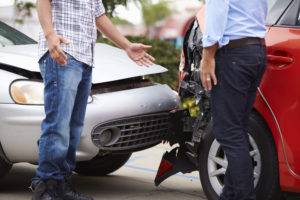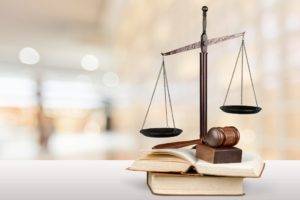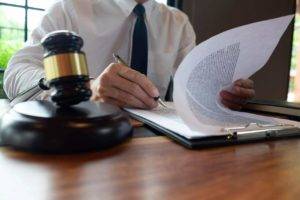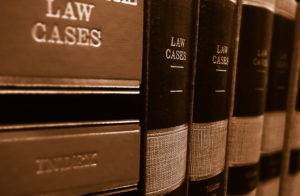Slips and falls frequently produce back and spine injuries, broken bones, or traumatic brain injuries (TBI) according to the U.S. Centers for Disease Control and Prevention (CDC).
When people hit the floor, nearby walls, or fall down steps, the blunt force of the impact can fracture bones. Soft-tissue injuries to the back, shoulders, or arms occur when people try to grab something to stop their fall, which wrenches their joints. Falls can also result in people hitting their heads. If people fall against the edges of furniture, shelves, or curbs, they can suffer deep lacerations. Sometimes injured people have the legal right to recover financial damages from property owners due to the legal concept of premises liability.
What are slip and fall accidents?
According to ConsumerNotice.org, slip and fall accidents are defined as people losing their footing and balance and falling as a result.
Need free legal help in Florida?
We specialize in personal injury claims.
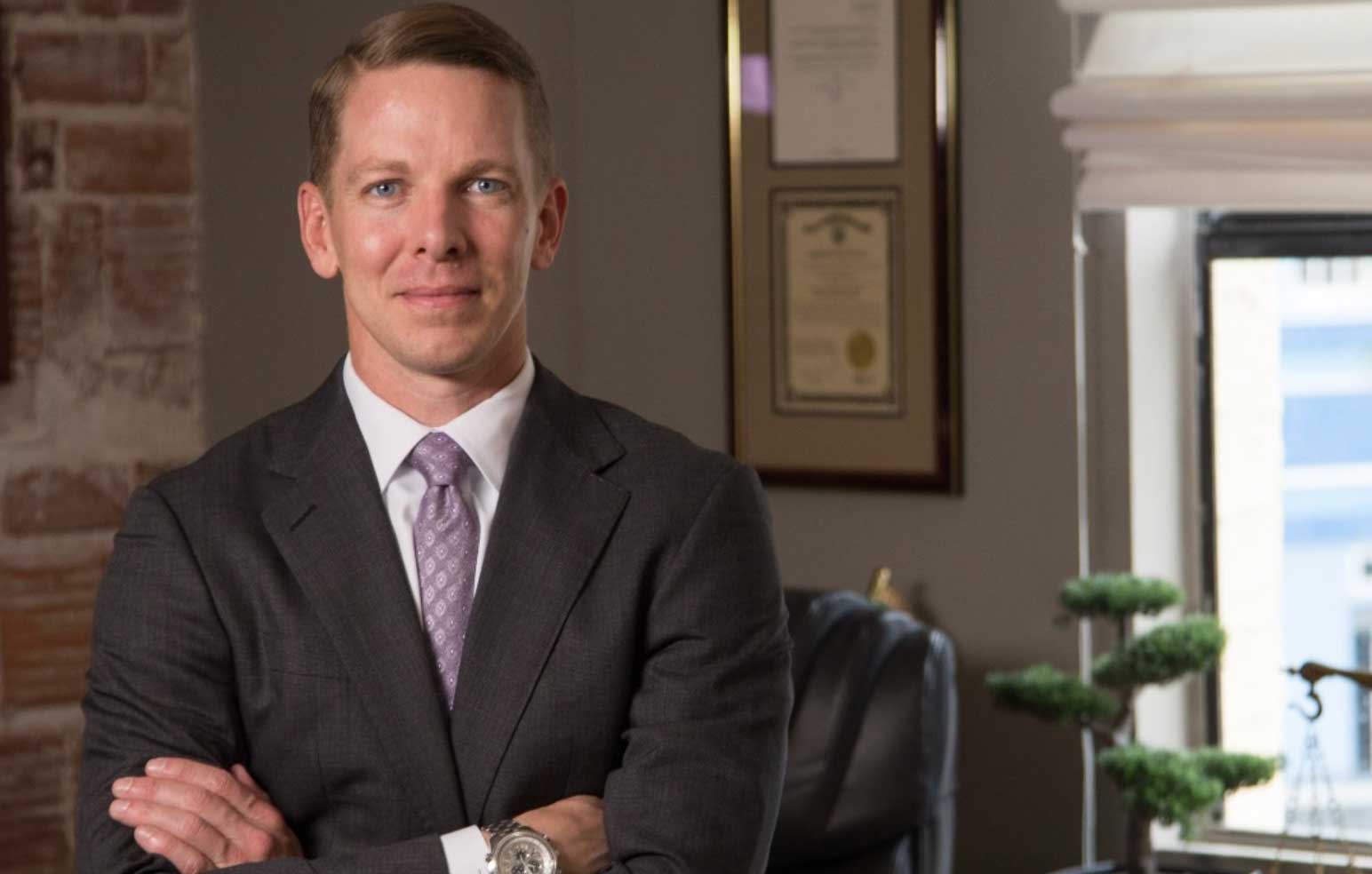
What is premises liability law in Florida?
A person who gets hurt in a slip and fall at a Florida business may recover financial damages upon proving that the business establishment had actual knowledge of the safety hazard or constructive knowledge of it according to Florida Statute Chapter 768, Section 755. Constructive knowledge means that the owner should have known about the safety hazard because it had existed long enough that someone exercising ordinary care should have noticed it or been aware that the hazard arose regularly.
Types of Injuries Commonly Sustained in Slip and Fall Accidents in Florida
According to data analyzed by Florida Health, falls represent the leading cause of death among Floridians age 65 and older.
For all age groups, falls are the top source of non-fatal injuries requiring hospitalization.
The most common non-fatal injuries are hip fractures, accounting for 32% of injuries.
Fractures to other lower-body bones produced 14% of injuries.
Similarly, 14% of victims experienced traumatic brain injuries (TBI).
Fractures to upper body bones happened in 13% of cases followed by damage to the back or spine in 9% of cases.
Traumatic Brain Injuries (TBIs)
People may experience TBI when the head and brain suffer a direct blow or jolt or an object pierces the skull according to the National Institute of Neurological Disorders and Stroke. Symptoms may arise immediately or take hours or days to manifest after an accident.
Physical symptoms of TBI include headaches, nausea, leakage of fluid through the nose, blurred vision, and seizures. Cognitive and behavioral symptoms are also common, like loss of memory, mood swings, speech problems, confusion, disrupted sleep, and depression.
A TBI could cause either temporary or permanent disabilities. Death can be the outcome of a severe TBI.
Sprains and strains
A slip and fall places force on the soft tissues of the body in abnormal ways. Sprains happen when the fall stretches or tears ligaments. Various other strains to the soft tissues, especially around joints, are associated with slip and fall accidents.
Fractures
A fracture may result on any part of the body that absorbs the shock of the fall. People may reach out with their hands to stop the fall and suffer a broken arm, wrist, or clavicle. Hip fractures are common too, particularly among the elderly.
Head and brain injuries
Falls of all kinds, including slip and falls, are the second leading cause of head injuries according to the National Library of Medicine.
Physicians use the Glasgow Coma Scale to evaluate people who have suffered trauma to the head and brain.
People with mild brain trauma will exhibit short-term memory impairment that could last for months.
Moderate injury causes people to display lethargy although they can respond to stimuli and answer questions. They may follow simple commands but have a reduced awareness of what is going on around them.
Severe head trauma is diagnosed for people who cannot communicate with accuracy and respond poorly to stimuli. In the worst cases, victims fall into a coma.
Spinal cord injuries
According to the National Library of Medicine, falls are a major source of spinal cord injuries.
The spinal cord is a tube of nerves encased in vertebrae reaching from the bottom of the head to the lower back. It is vulnerable to injury in a slip and fall. Spinal damage causes paralysis and numbness. The higher the location of injury on the spine, the more areas of paralysis people may experience.
Disc herniations
Soft-tissue discs cushion the space between vertebrae around the spine. A tear in the outer portion of a disc allows the softer inner material to shift outward. This is called a disc herniation. The effect on the nerves within the spine cause pain, numbness, or weakness.
People who experience symptoms of disc herniation after a fall may need diagnostic imaging tests or nerve conduction studies. According to the Mayo Clinic, treatment could include management with pain medication, cortisone injections, physical therapy, and surgery.
Abrasions and contusions
An abrasion injury damages the skin by tearing or rubbing it off. This could happen during a fall when a person’s body rubs across a rough surface.
Contusion is the medical term for a bruise. Damage occurs beneath the skin in the muscles and other interior soft tissues.
Joint dislocations
The pull of gravity on a person who has slipped can force the connection between two bones at a joint out of place, or dislocate them. This commonly happens to knees, but dislocations in the shoulders or elbow also occur in falls. Time off, physical therapy, and sometimes surgical repair are needed to recover.
Common Causes of Slip and Fall Accidents in Florida
A number of issues can result in people losing their footing and being injured as a result. When people responsible for a building do not take action to remedy the hazards, or at least warn others about them, they can become liable to pay the expenses of slip and fall victims.
Wet or slippery floors
Spills or leaks of liquid into an area where people walk create the risk of slipping. This is especially a problem in places where people expect floors to be dry.
Uneven or broken flooring
Broken flooring can produce dips or ridges where people catch their feet and fall. Even in the absence of damage, some flooring can have uneven joints between different sections of a building.
Insufficient lighting
Stairs, steps, or level flooring may be hard to navigate in the dark. A property manager failing to replace light bulbs or install sufficient lighting to begin with will create a hazard that could injure people who cannot see where they can safely place their feet.
Hazardous stairways or ramps
Many issues could compromise stairways and ramps. Aging materials could cause weak spots that break beneath a person’s weight. The design of stairs can result in hazards as well, such as steps too narrow for most people’s feet or ramps that are too steep. The absence of handrails also leaves people vulnerable to falling.
Obstacles or debris on walkways
Boxes, crates, equipment, or trash in places people need to walk forces them to adjust their route. Obstacles might cause someone to step off a level surface and then lose balance. Debris poses the danger of tripping.
Need free legal help in Florida?
We specialize in personal injury claims.

What is premises liability law in Florida?
In general, premises liability in Florida means that property owners have a duty to maintain safe environments for the people who enter their properties lawfully.
Factors for Determining Premises Liability
A property owner likely must pay damages due to the principle of premises liability if the owner had knowledge of the hazard or should have known about the hazard.
According to Florida Statute Chapter 768, Section 075, the status of a person determines liability as well. People on a property by invitation, meaning they had a reasonable expectation that they were welcome at the location, may have the right to collect damages. Trespassers, however, have very limited rights to claim damages due to premises liability.
Knowledge of hazardous conditions
A property owner’s awareness of a hazardous condition may be actual or constructive according to Florida Statute Chapter 768, Section 755.
Constructive knowledge means that the responsible party should have known because the hazardous condition had existed for a length of time that would have reasonably allowed for its discovery. Additionally, problems that the property owner knows happen repeatedly, like daily mopping or a persistently leaky pipe, may represent constructive knowledge of the hazard.
Timeliness of warning signs or barriers around hazards
A property owner who takes too long to post warnings or restrict access could be deemed to have premises liability. A rapid response, however, may limit liability due to the responsible party taking action as soon as a safety threat was detected.
Reasonableness of property owner responsibilities and efforts to address hazards
Disputes about premises liability often center on whether the property owner exercised a level of care that a reasonable person would think is necessary. A reasonable person would evaluate a property regularly for hazards and fix problems or warn people as soon as possible. Even so, hazards that emerge suddenly may not allow a reasonable person enough of a chance to discover and remedy it before an accident happens.
Frequently Asked Questions
What type of injuries are likely from a slip and fall?
Slip and fall accidents commonly produce broken hips, legs, or arms, head trauma, or soft tissue damage, like sprained ligaments or dislocated joints. Back and spinal injuries are quite common as well.
What are the 4 causes of slip and fall accidents?
Wet floors top the list of causes of slip and fall accidents. Visitors and employees slip on the slick flooring and fall.
Uneven or broken flooring presents another significant hazard because people trip or otherwise lose their balance when their feet catch on the edges.
Debris or other obstructions on floors, particularly within aisles in a retail store, frequently cause people to trip or force them onto unsafe surfaces in an effort to get around an obstruction.
Broken or poorly lit steps and stairs create another hazard that results in falls that hurt people.
What is the most serious type of injury?
People who hit their heads hard when they fall could die from the traumatic brain injury (TBI) or suffer permanent cognitive impairment due to brain damage. The long-term effects of a severe TBI include memory and behavioral problems that prevent employment and impair relationships.
How much is a slip and fall case in Florida?
As with all forms of personal injury, the value of a slip and fall case depends entirely on the extent of injuries and level of long-term harm. Serious injuries that require lengthy recovery times incur many medical bills and cause high losses of income. When people only experience short-term losses, they might receive settlements between $10,000 and $70,000. Long-term disability, however, may leave a victim in need of a six-to-seven figure settlement.
How do you win a slip and fall case in Florida?
According to Florida Statute Chapter 768, Section 755, the property owner must pay damages when an accident victim proves that the owner knew about the hazard, or should have known, but did not take timely action to fix the hazard or warn people.
Proof may come from taking pictures of the accident scene and interviewing witnesses and those responsible for maintaining the area. Surveillance video footage is quite useful. Written records about property inspections and maintenance activities are an important source of information for proving when a hazard emerged and how long it took for the owner to take action to remedy it.
How long does it take to settle a slip and fall case in Florida?
Most slip and fall cases that have sufficient evidence reach a settlement through an insurance company or property owner in under a year. Accident victims typically need weeks or months to complete medical treatments and fully understand if they have suffered any long-term consequences.
Serious cases with high expenses may take two to four years to resolve due to the need to account for all expenses. Insurers may also be motivated to fight against paying high settlements and could leverage any gray areas in the evidence to argue against premises liability. This situation could result in a lawsuit, which adds time due to necessary procedures and long waits at the courts.
Need free legal help in Florida?
We specialize in personal injury claims.



